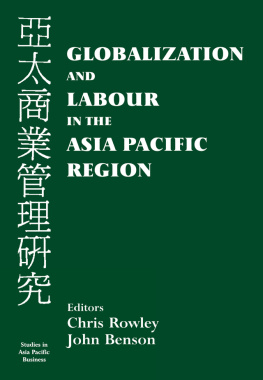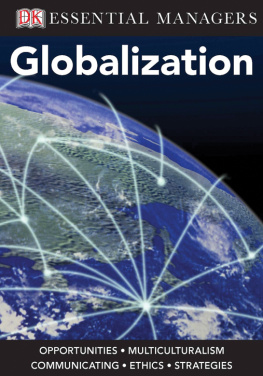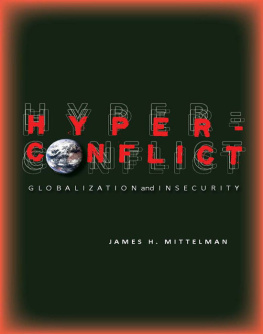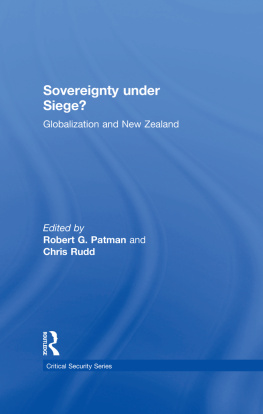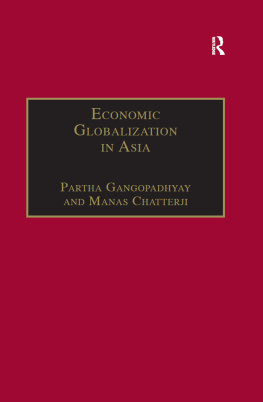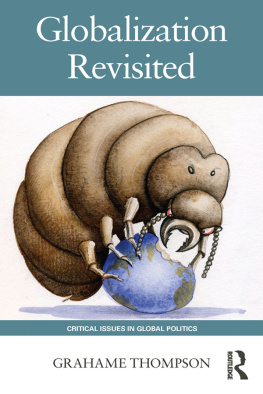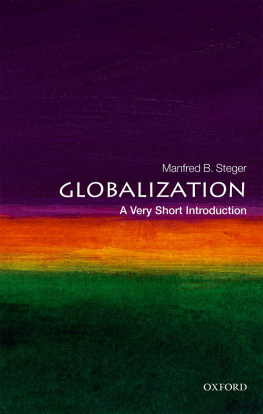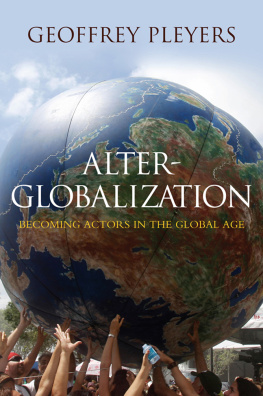XUEFEI REN is assistant professor of sociology and global urban studies at Michigan State University.
The University of Chicago Press, Chicago 60637
The University of Chicago Press, Ltd., London
2011 by The University of Chicago
All rights reserved. Published 2011.
Printed in the United States of America
20 19 18 17 16 15 14 13 12 11 1 2 3 4 5
ISBN-13: 978-0-226-70980-2 (cloth)
ISBN-13: 978-0-226-70981-9 (paper)
ISBN-13: 978-0-226-70982-6 (ebook)
ISBN-10: 0-226-70980-9 (cloth)
ISBN-10: 0-226-70981-7 (paper)
Library of Congress Cataloging-in-Publication Data
Ren, Xuefei.
Building globalization : transnational architecture production in urban China / Xuefei Ren.
p. cm.
Includes bibliographical references and index.
ISBN-13: 978-0-226-70980-2 (cloth : alk. paper)
ISBN-10: 0-226-70980-9 (cloth : alk. paper)
ISBN-13: 978-0-226-70981-9 (pbk. : alk. paper)
ISBN-10: 0-226-70981-7 (pbk. : alk. paper) 1. Architecture and globalizationChina. 2. Urban renewalChina. 3. City planningChina. I. Title.
NA2543.G46R46 2011
307.1'2160951090511dc22
201003219

The paper used in this publication meets the minimum requirements of the American National Standard for Information SciencesPermanence of Paper for Printed Library Materials, ANSI Z39.48-1992.
Building Globalization
Transnational Architecture Production in Urban China
XUEFEI REN
THE UNIVERSITY OF CHICAGO PRESS
CHICAGO AND LONDON
FOR MY PARENTS
Contents
Illustrations
TABLES
FIGURES
Preface
Up in Flames
On the evening of February 8, 2009, the last day of the Chinese Lunar New Year, the unfinished CCTV (China Central Television) complex in Beijing erupted in a spectacular fire. The fire, caused by illegal fireworks set off by CCTVs own employees to celebrate the new year, engulfed every floor of the five-star Mandarin Oriental Hotel, a fifteen-hundred-seat theater, and state-of-the-art recording studios housed in the complex. The CCTV headquarters is the most controversial development among all the megaprojects built in Beijing in the pre-Olympic years, not only for its astronomical construction cost but also for its potent symbolism. With its striking design by OMA (Office for Metropolitan Architecture), a renowned European architecture firm, the project clearly signifies the financial and political prowess of China Central Televisionthe most powerful broadcasting network in China and the propaganda hub of the Chinese communist party-state. Architectural marvels such as the CCTV building indicate a clear transformation of the Chinese party-state, which has become a visible force of architectural globalization by financing large-scale iconic projects.
The image of the CCTV complex ablaze is no less spectacular than the iconic architecture itself. Soon after the fire broke out, thousands of residents hurried to the site to take photos of the fire with cell phones and cameras from all possible angles. Major media networks, including the BBC and CNN, also rushed to the site to record the spectacle. Local celebrities, from the real estate tycoon Pan Shiyi to iconoclast artist Ai Wei Wei, competed to post photos of the fire on their blogs and claimed, I was thereat the CCTV fire! Within less than an hour, news of the CCTV fire was spread via Twitter all over the world, and images and video clips of the blaze were already on YouTube.
In the meantime, the Chinese government issued a censorship notice to various news sources and websites in an attempt to control the coverage of the fire. The censorship notice specifically ordered news outlets not to post any photo images, not to report the incident in detail, and only to publish the official report of the fire from the state-controlled Xinhua news service. As a result of this deliberate government censorship, television coverage of the fire was nonexistent in China, and major domestic websites pulled off the fire photos they had posted. But ironically, some Internet users managed to post the original government censorship notice and various revised photos mocking the CCTV fire on the Web. The fire was no minor loss, but little sympathy for the tragedy could be found in the online postings and commentaries. On the contrary, many saw the fire as a well-deserved punishment for the extravagant government expenditure of public money on the CCTV project.
If the Olympics opening ceremony staged in the National Stadium in August 2008 was a bright spectacle symbolizing the ascendance of China as a new power on the world stage, then the CCTV fire six months later was a dark spectacle marking a turning point of Chinas urban construction boom. Iron fences have replaced the Olympics billboards of a year ago in an attempt to hide the charred remains of the building. But residents, tourists, architecture students, and other passersby come to the site on a regular basis, registering with cameras the damaged architectural masterpiece. In a strange way, the burned CCTV tower, peeking from behind the iron fences, has also brought a certain kind of relief to the city and its residents, suggesting the end of spectacles, the fragility of architecture, and the return of normality and, possibly, ordinariness too.
This book tells a story of Chinas urban transformations through the lens of the architectural metamorphoses in Chinese cities. The main bulk of fieldwork was conducted in Beijing and Shanghai between 2004 and 2008an extraordinary time period of massive urban renewal and destruction. The events that happened and urban megaprojects constructed during this period have in many ways fundamentally changed the social and spatial organization of Chinese cities and urban life. By zooming in on the social worlds of both power brokersthose who have great influence on reshaping Chinese citiesand ordinary urban citizens, this book provides an account of how Chinese cities were made, remade, and unmade in the first decade of the twenty-first century.
Acknowledgments
In 1998 I left China for Japan to pursue my postgraduate study in sociology and urban planning. At Nagoya University and Tokyo Metropolitan University, I had the good fortune to work with Yasushi Matsumoto, one of the finest urban scholars in Japan. It was during my years in Japan and under the guidance of Matsumoto that I began to embark on urban research. My general intellectual thirst to make sense of the urban crystallized into concrete research questions and projects once I began my doctoral study in Chicago in 2001. Here again I was extremely fortunate to work with many inspiring professors and fellow graduate students. Saskia Sassen introduced me to many key institutions around the world that were crucial for this research. Her sharp, concise, and humorous comments were especially illuminating at times when I was overwhelmed by fieldwork encounters. Input and feedback from William Parish, Dingxin Zhao, and Anthony King (SUNYBinghamton) were also crucial in shaping the contours of the final book. Kings writings on spaces of globalization inspired me to choose transnational architectural production as a topic in the first place.
I must also thank the University of Chicago for its institutional support. It was a great privilege to spend six years in such an intellectually stimulating environment as Hyde Park. The numerous workshops at the university provided good venues for me to present my work in progress. I would like to thank the participants at the Workshops on East Asia, Built Environment, Culture of Globalization, and Urban Structure and Processes. The informal study group of Chinese sociology Ph.D. students was a major source of support, friendship, and inspiration. Many other graduate students and faculty also read my draft chapters and provided insightful feedback for revisions. My classes at the Graham School of General Studies in 2006 and 2007 offered great opportunities to practice communicating my ideas in jargon-free language. The Division of Social Sciences and the Center for East Asian Studies at the University of Chicago provided crucial funding for dissertation fieldwork and writing.

 The paper used in this publication meets the minimum requirements of the American National Standard for Information SciencesPermanence of Paper for Printed Library Materials, ANSI Z39.48-1992.
The paper used in this publication meets the minimum requirements of the American National Standard for Information SciencesPermanence of Paper for Printed Library Materials, ANSI Z39.48-1992.
